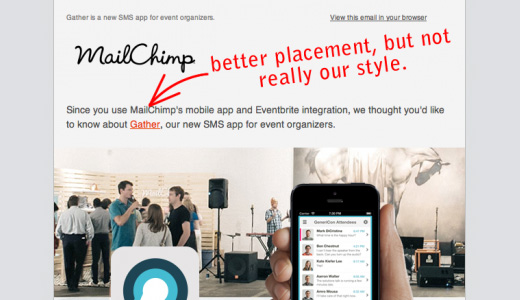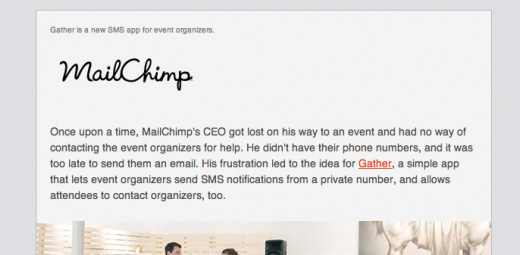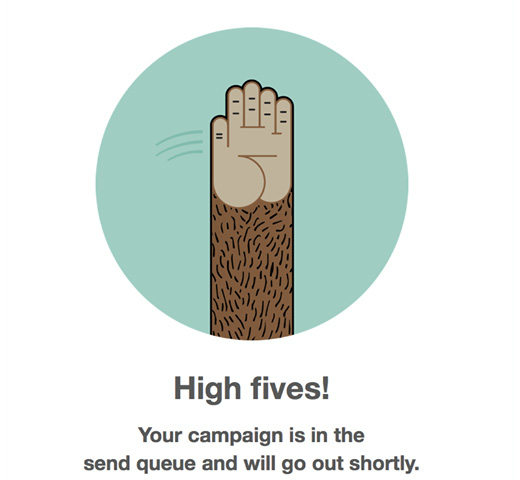While we all know and acknowledge that emotions impact how people make decisions, it continues to be underplayed in marketing efforts that positive emotions play a powerfully beneficial role in engaging customers.
Connecting on a positive emotional level is too often left by the wayside when we’re anxious about leading more eyeballs to our websites, and the modern version of “always be closing” is “always be converting.”
The problem with conversion is that it sounds like an open-and-shut scenario, that all of your marketing efforts lead up to one moment. Yet, it’s actually a process, one that should take into account what your very human customers find valuable and relatable.
That means it’s important to consider squishy questions like “How does this make you feel?” throughout a course of interactions. The kind of emotional experience your customers and potential customers experience impacts not just whether you grab their attention but the length and quality of your relationship with them.
Why Positivity Turns “Me” into “We”
While negative emotions narrow your field of vision and put you on guard, positive emotions expand your mindset, attention, and receptiveness. As psychologist Barbara Fredrickson, creator of the “broaden and build” theory, explains in her book Positivity, positive emotions “broaden people’s ideas about possible actions, opening our awareness to a wider range of thoughts and actions than is typical.” And that openness leads people toward discovery and building.
“Positivity also alters how you see connections with others,” Fredrickson writes. “You think ‘we’ instead of ‘me.’” By cultivating the ‘we’ and increasing the probability of bringing people onto your side, you also increase the willingness to accept an offer.
Researchers at the University of Michigan wanted to find out how much difference positivity made in a negotiation scenario in which you’d expect parties to come to the best result by playing hardball or remaining poker-faced.
Study participants had to work out the final arrangements of booking a catering service for their upcoming wedding reception. The business manager of the catering company, played by a professional actor, explained that the quoted price of $14,000 had to be increased to $16,995 because of market pricing fluctuations. Three different versions were performed for each set of participants, delivering identical terms but with positive, negative, or neutral emotion.
The result? People who heard a positively toned pitch were twice as likely to accept the deal as people who heard a negatively toned pitch.
Stretching the Length of a Customer Relationship
Given that the terms of the deal itself were the same, the researchers concluded that “the strategic display of positive emotion may be more effective than negative emotion;” and that this could be true not only for that one deal itself but also “with regard to retaining and embarking on a future business relationship.”
So, showing and cultivating positivity impacts the expected length of the relationship. Therefore, the lifespan of people’s willingness and receptivity can be much longer than you think.
Fredrickson traces the fact that positive and negative emotions work in different time frames to evolution. At one time, it was important that negative emotions induce a narrower view because that’s what protected people when faced with a threat to survival. However, the broadened mindset brought on by positive emotions matters over longer periods of time, as the building of possibilities, skills, and resources takes time to develop.
Positive experience is the start of a positive association, which builds upon itself over time. One transaction or interchange turns into a relationship. Zappos, Wistia, and MailChimp are three companies that have a business approach which accentuates the positive, and, as a result, their customers are both passionate and loyal.
Zappos
Zappos completely understands the expansive power of positivity. Their whole business strategy is to cultivate a positive emotional association in the customer, not just once, not just to get them in the door, but throughout every interaction.
In his book, CEO Tony Hsieh relates that companies often write off call centers “as an expense to minimize,” but, by doing so, they lose crucial opportunities to increase the lifetime value of the customer. He explains:
“Usually marketing departments assume that the lifetime value of a customer is fixed when doing their ROI calculations. We view the lifetime value of a customer to be a moving target that can increase if we can create more and more positive emotional associations with our brand through every interaction that a person has with us.”
To put this into practice, Zappos reps are not required to follow a preset, cold script, but rather are given the freedom to simply be themselves and do what they can to respond to people in a human way “so that they can develop a personal emotional connection (internally referred to as PEC) with the customer.”
The result includes granting surprise upgrades to free overnight shipping, sending flowers to a customer undergoing medical treatments affecting her feet, or staying on the phone with a customer for hours and hours. “Sometimes people just need to call and talk,” said Shaea Labus, the employee who was on a call with a customer for almost 10 hours. “We don’t judge, we just want to help.”
When a company like Zappos takes the long view in building a positive emotional connection — and sees it as such an important principle that they have a shorthand acronym to refer to it — that relationship is much more likely to last, and customer lifetime value has the potential to grow. It’s no wonder that the company refers to its customer support staff as the “Customer Loyalty Team.”
The company’s path to profits was a result of their delivering happiness rather than shoes.
Wistia
The video hosting and marketing company, Wistia, isn’t afraid to let its personality shine through to create PEC. A few years ago, Wistia tried to market itself by showing product demo screencasts, but the analytics showed that the approach wasn’t successful. As CEO Chris Savage explains, “We’ve learned that for our audience, a lot of the things that resonate better are just really helping to create an emotional connection between the product and the company and our audience.”
Like Zappos, the employees at Wistia don’t follow a script but talk in their own voices to help create that emotional connection, and they’ve cultivated a whole style that’s uniquely their own. Savage calls it “the Wistia way,” which means “Go a little over the top, have a lot of fun with it, and express our own excitement.”
So when Wistia launched its free plan, they announced the news not with a simple email announcement but with a rap video. When they put it in an email form for potential subscribers who are browsing through their Learning Center, it’s placed at the end of the video because that’s where it makes the most sense “for the person on the other end.” When they asked people to fill out a survey to find out what content and events they were most interested in, they didn’t just send out a link to the questions but made an awesome video with the whole company line dancing.
It all fits in with Wistia’s audience-centric approach, which takes the long view in creating, building, and developing emotional connections and relationships that ultimately work for their business, even when those people might not become customers. That turns the conventional lead generation funnel on its head. Ezra Fishman and Alyce Currier explain in their insightful blog post:
“Every person who encounters your brand can be an advocate and source of referrals. Instead of watching lost leads leak out of the funnel forever, an audience-centered approach converts everyone we ‘meet’ into fans. The collective power of this audience cloud is enormous—and feeds the funnel.”
When you help create positive emotional connections between audience, company, and product, and infuse your own excitement and personality into how you communicate with that audience, you’re engaging the people you want to attract in the first place and building more valuable relationships.
It’s less hooking up and more settling down.
MailChimp
Even in its own marketing campaigns, MailChimp takes the time to connect on a personal level, veering sharply away from all the noisy blasts and the bombastic style utilized by so many marketers that seem to forget their customers are people, too. Explaining the editing process of an email campaign announcing a new app, CEO Ben Chestnut recounts the effort the company took to craft copy that reflects its personality and connects with the reader.
This wasn’t really expressive of MailChimp’s voice:
So they went with a little story that actually explained what the app did in a fun way. Chestnut comments, “I loved it because it was humble, and it was human.”
Why take the time to do this? Because just as Hsieh found success at Zappos by refusing to discount customer service calls (and instead use them as a way to connect and create PEC), email marketing is another opportunity full of potential that many businesses are either writing off or failing to take enough time with to show they care. As Chestnut puts it, “Email marketing is your chance to connect with your customers in a human way.”
MailChimp is specifically designed to foster positive emotion, and the experience of using MailChimp is a delight thanks to the service’s quirky fun.
That spirit makes a huge difference when you’re up late at night trying to focus on sending out an awesome email campaign.
MailChimp’s lead UX designer, Aarron Walter, is also the author of Designing for Emotion, in which he lays out the long-term benefits that fostering positivity brings:
“People will forgive shortcomings, follow your lead, and sing your praises if you reward them with positive emotion.”
When you’ve taken the time to show and share positivity, you create that “we” effect that Fredrickson writes about, which means you build trust and engagement. People not only become stronger advocates, but they also listen more and give you more leeway.
When you show you’re human, you get people on your side.
About the Author: Walter Chen is the co-founder of iDoneThis. Our tool helps people recognize their accomplishments and make progress. We build, produce content, and conduct support with an approach of nourishing positive emotional connection and value, focusing on customers and what they’re accomplishing rather than on what they’re missing. Find Walter on Twitter @smalter.



Comments (5)